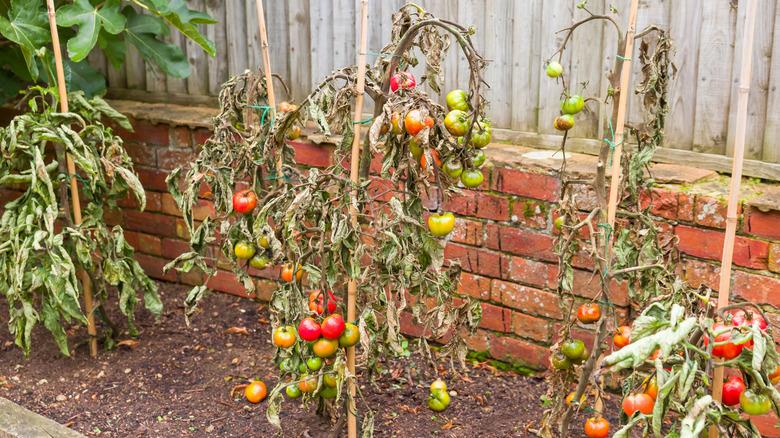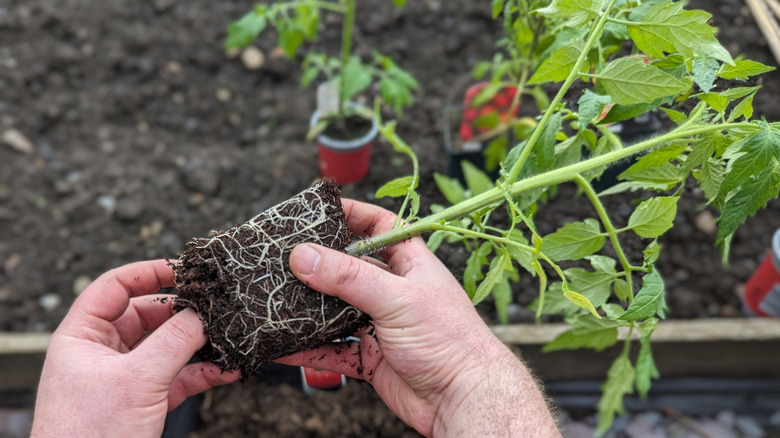Can You Rescue A Tomato Plant From Root Rot? Here Are Your Options
It's no surprise that tomatoes are a popular edible plant— so popular, in fact, that they're the one of the most consumed vegetables in the world, second only to potatoes. Growing them yourself comes with a tasty reward come harvest time, so long as you keep your plant happy and healthy. But if your tomato plant's growth appears stunted and it's starting to wither, you may be dealing with root rot. Don't panic just yet! If some roots are still firm and white instead of mushy and brown, your tomatoes may not be too far gone, and there's still a chance you can save them.
Root rot isn't a specific disease — rather, it's a category of disease encompassing any pathogen that causes a plant's root system to decay. Symptoms vary based on the underlying cause of the root rot and how bad the infection is. Root rot is often caused by fungi and fungi-like organisms from species like Phytophthora, Pythium, Rhizoctonia solani, and Fusarium, with some being more easily treatable than others.
Part of what makes root rot so tricky is that you might not catch it until symptoms start to show above ground, such as wilting, yellowing leaves, and top-down dieback. If you suspect root rot, your best bet is to observe your tomato's roots directly, either by carefully removing it from its pot if you're growing tomatoes in a container, or brushing away a bit of soil until you can see the top of the roots if it's in the ground.
How to save a tomato plant from root rot
Generally, as long as your tomato's roots haven't all gone brown and mushy, you may still be able to salvage the plant from root rot. The organisms that cause root rot love soggy soil conditions, so decreasing soil moisture by temporarily reducing watering and removing excess mulch can help. These plants need well-draining soil anyway, so make sure you're using proper soil for growing healthy garden tomatoes. There are also biological control agents and chemical fungicides that target the pathogens causing root rot, but you'll need to know which specific pathogen is responsible in order to choose a product that will actually be effective.
Ultimately, the best treatment for root rot is prevention, so consider planting one of the many tomato cultivars that are disease resistant. However, because root rot is such a broad category, no cultivar will be resistant to root rot as a whole; instead, look for tomato varieties that are resistant to the pathogens that cause root rot, like Fusarium. Some cultivars' names even have a letter after the name to indicate which diseases they're resistant to. Note that resistant doesn't mean immune — resistant plants can still be infected under the wrong conditions. Root rot-causing pathogens can live in the soil for a long time, so after triaging your tomatoes, be sure to decontaminate any tools used with a 10% bleach solution or 70% alcohol to avoid further spreading disease.

